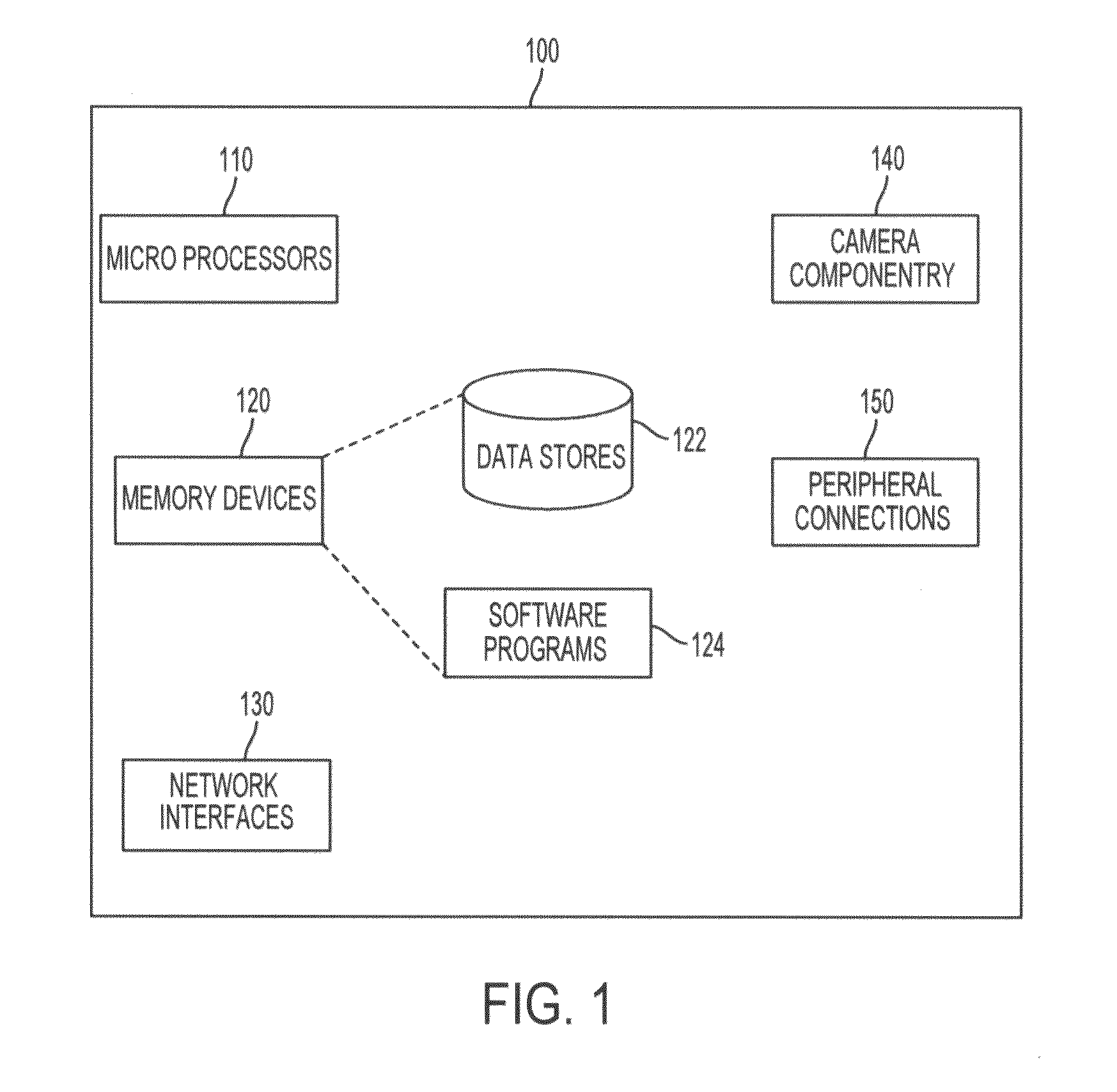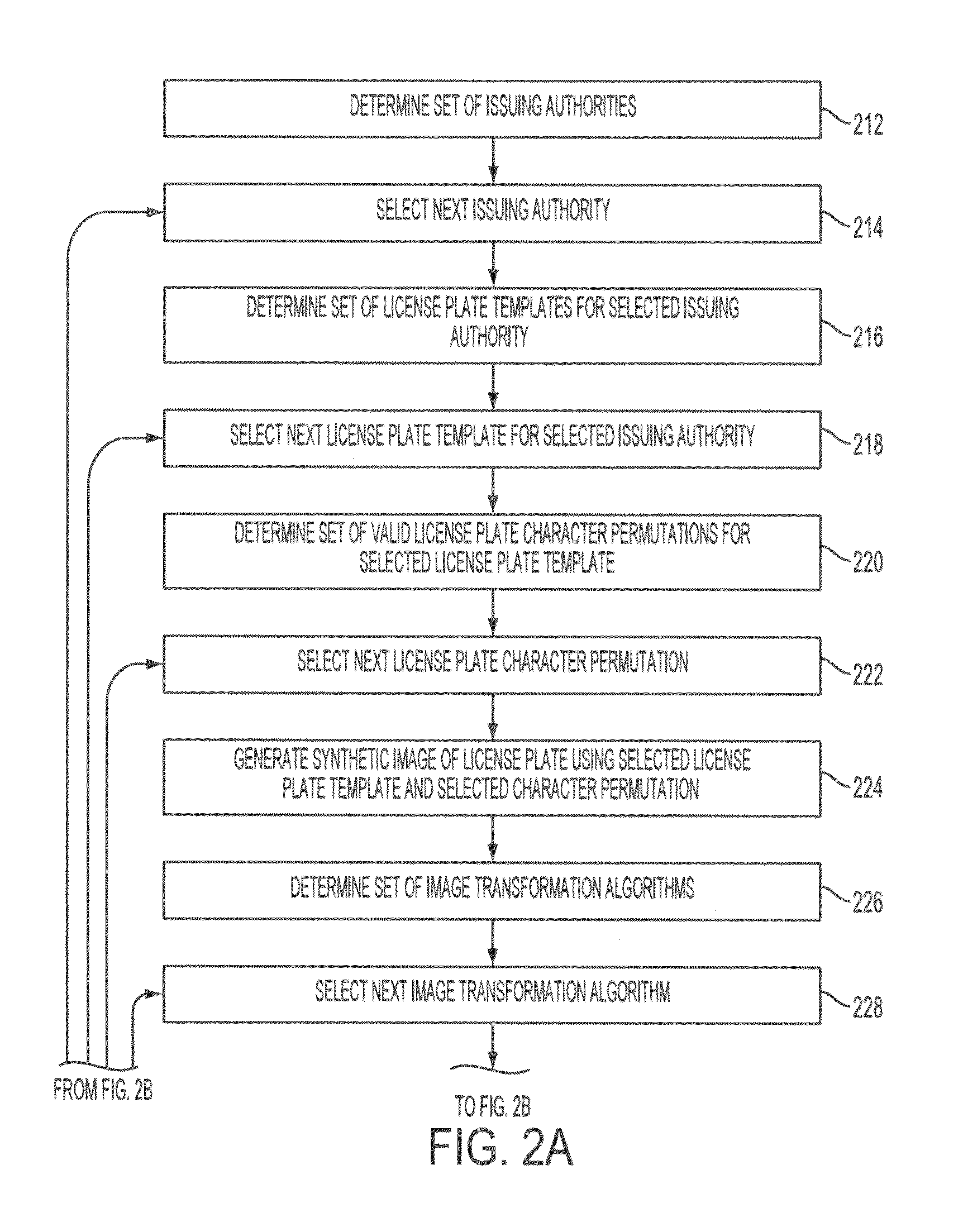Methods and systems for improved license plate signature matching by similarity learning on synthetic images
a technology of similarity learning and synthetic images, applied in the field of methods and systems for improving automatic license plate recognition, can solve the problems of rust, deformation, reduced contrast due to image, difficulty in ocr accurately deciphering characters, etc., and achieves the effects of reducing similarity scores, increasing likelihood, and reducing similarity scores
- Summary
- Abstract
- Description
- Claims
- Application Information
AI Technical Summary
Benefits of technology
Problems solved by technology
Method used
Image
Examples
Embodiment Construction
[0024]The following detailed description refers to the accompanying drawings. Wherever possible, the same reference numbers are used in the drawings and the following description to refer to the same or similar parts. While several exemplary embodiments and features of the invention are described herein, modifications, adaptations, and other implementations are possible, without departing from the spirit and scope of the invention. Accordingly, the following detailed description does not limit the invention. Instead, the proper scope of the invention is defined by the appended claims.
[0025]FIG. 1 is a diagram depicting exemplary hardware componentry of a system configured to perform the described embodiments, consistent with certain disclosed embodiments. System 100 may comprise any one or more computing devices that may be configured to perform the described embodiments. For example, system 100 may comprise a one or more microprocessors 110 of varying core configurations and clock ...
PUM
 Login to View More
Login to View More Abstract
Description
Claims
Application Information
 Login to View More
Login to View More - R&D
- Intellectual Property
- Life Sciences
- Materials
- Tech Scout
- Unparalleled Data Quality
- Higher Quality Content
- 60% Fewer Hallucinations
Browse by: Latest US Patents, China's latest patents, Technical Efficacy Thesaurus, Application Domain, Technology Topic, Popular Technical Reports.
© 2025 PatSnap. All rights reserved.Legal|Privacy policy|Modern Slavery Act Transparency Statement|Sitemap|About US| Contact US: help@patsnap.com



